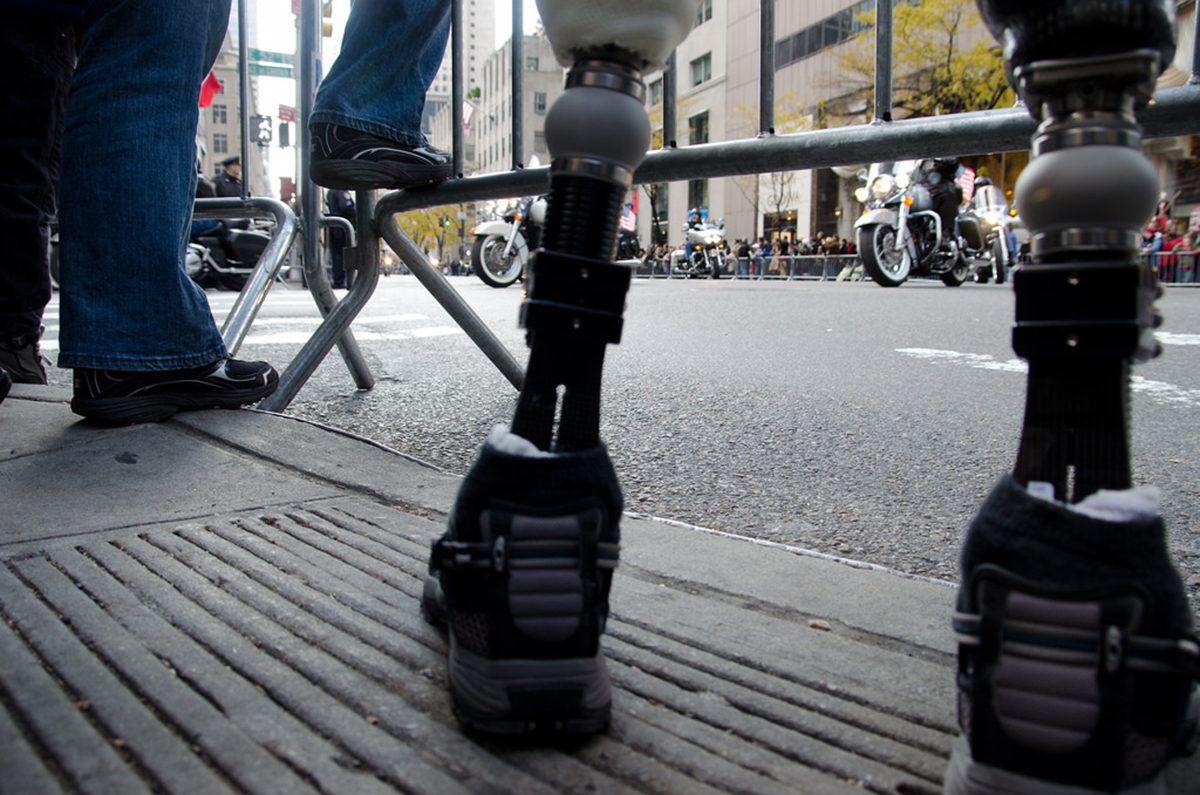Ever since the Terminator movies, the American imagination has been captured by the idea of a human-machine hybrid, something like a cyborg. Soon a cyborg may be coming to a home near you. Or maybe that cyborg will be you.
A Google venture known as Verily Life Sciences is investing $700 million with pharmaceutical giant Glaxo Smith Kline to start a new company called Galvanni Bioelectronics, to develop implants that control human organs with electricity.
The purpose of these bioelectric implants is to correct problems in organs with tiny electric shocks, much as pacemakers and implantable defibrillators do now. These devices will attach directly to the nerves regulating organs, and will be powered and controlled wirelessly, reporting data back to doctors through the Internet.

Electronic Devices to Control Organ Activity Already Exist
The Galvanni implants won't be something entirely new. In 2015 the FDA approved an implantable device that stimulates the vagus nerve, to reduce appetite and control obesity. Electrodes placed in the brain have been used for nearly 15 years to control Parkinson's disease, depression, and epilepsy. Pacemakers regulate heartbeat and defibrillators can perform the role of shock paddles already inside the chest in case of cardiac arrest.
What's Different About the New System?
On the other hand, the Galvanni implants will offer a significant advantage over existing technology. The new firm hopes to develop devices that can control nerve impulses to organs much more precisely, and that can also monitor nerve traffic to chart the course of disease. Dr. Moncef Slaoui, who is leaving the chairmanship of Glaxo Smith Kline's international vaccine division to become the future Chairman of the Board of the new company, said in a press release:
"Many of the processes of the human body are controlled by electrical signals firing between the nervous system and the body’s organs, which may become distorted in many chronic diseases. Bioelectronic medicine’s vision is to employ the latest advances in biology and technology to interpret this electrical conversation and to correct the irregular patterns found in disease states, using miniaturised devices attached to individual nerves. If successful, this approach offers the potential for a new therapeutic modality alongside traditional medicines and vaccines."
READ Break Through! Implanted Chip Will Let Blind People See
Initially the company will be pursuing proof of concept in treating a variety of conditions including rheumatoid arthritis and inflammatory diseases. These devices will be about the size of a vitamin capsule. They will be attached to nerves with laparoscopic surgery, typically through an incision about 3 mm (1/8 inch) long that doesn't even need to be stitched. A patient would show up for surgery in the morning and go home the same afternoon, washing away a kind of surgical glue a few days later with no more pain and inflammation than are caused by getting a shot with a really large needle (and even that pain would be stopped with a shot of a topic anesthetic such as lidocaine). The new technology would make complicated surgical procedures to "cut nerves" unnecessary, and has the potential to provide non-drug treatment for diabetes.
How Could an Implantable Nerve Stimulator Relieve Diabetes?
Another firm called SetPoint Medical has already been working on implanted electrical devices to treat type 2 diabetes without medications. Company founder Dr. Kevin Tracey had planned to become a neurosurgeon, but during his residency in the late 1980's he made a series of observations of how the nervous system controls inflammation, and decided to spend his career in research. Much of Dr. Tracey's work has focused on the vagus nerve.
The vagus nerve is one of the major nerves that connects the brain to the body. A bundle of about 80,000 nerve fibers, it sends signals to the heart, lungs, liver, intestines, and pancreas, among other organs. Dr. Tracey compares it to a telephone cable that can carry 80,000 phone calls. The organs are constantly informing the brain of changes in the levels of certain chemicals, and the brain "calls back" with orders to release regulatory chemicals.

In type 2 diabetes, the pancreas sends a lot of 9-1-1 calls to the brain with the message "Help! Blood sugar levels are going up and I don't know what to do!" The brain calls back with the order to release inflammatory hormones called cytokines that temporarily increase the release of insulin. These cytokines force the pancreas to break down insulin from its storage form to its active form.
Unfortunately, they also destroy health tissue. The reaction eventually "burns out" the insulin-producing cells of the pancreas. By the time chronically high blood sugar levels are measurable, this constant emergency stress response has already "burned out" about 85 percent of insulin-producing cells.
What Dr. Tracey's device will do is just to interrupt communications between the brain and the pancreas two or three times a day with a very slight electric charge. These interruptions would only last two or three minutes each. That's not long enough to interfere with normal regulation of blood sugar levels, but it is long enough to reduce the production of inflammatory cytokines. No medication is needed. The process simply prevents the excesses of a normal regulatory process in ways that preserve the insulin-making capacity of the pancreas. Reducing inflammation, the neuroscientist believes, reduces the depletion of insulin-making cells in the pancreas.
READ 14-Year Old Shows That iPad 2 May Interfere With Heart Implants
Dr. Tracey's device is somewhat larger than the device proposed by the competing company Galvanni Biolectronics. Not really an application of nanotechnology, the device is not so much the size of a vitamin capsule as the size of a fish oil capsule, about as long as an American dime (10 cents) is wide. There can be some buzzing, tingling, burning, or stinging while it is in operation. However, many patients in Dr. Tracey's trials have not even known the device was turned on.
The experts speculate that the general public will be able to get these devices in about 10 years, when they presumably will be covered by health insurance. Just show up for the painless, bloodless, sutureless surgery, and then see a technician to have the device turned on. Enjoy the benefits of reduced inflammation for protection against diabetes, and possibly against the other dread diseases of inflammation including Alzheimer's, arthritis, and inflammatory and irritable bowel disease.
- New Scientist Staff and Press Association. Short Sharp Science: Google firm hopes to control organs with electrical signals. New Scientist. 6 August 2016.
- Jim Schnabel. Targeting Inflammatory Diseases With Electrical Signals Devices, Not Drugs, Take Aim at Vagus Nerve: A Conversation with Kevin J. Tracey, M.D. The Dana Foundation. 16 April 2015.:
- Photo courtesy of raruschel: www.flickr.com/photos/raruschel/5221156753/
- Photo courtesy of f_mafra: www.flickr.com/photos/f_mafra/8420388901/
- Photo courtesy of f_mafra: www.flickr.com/photos/f_mafra/8420388901/
- Photo courtesy of raruschel: www.flickr.com/photos/raruschel/5221156753/


Your thoughts on this